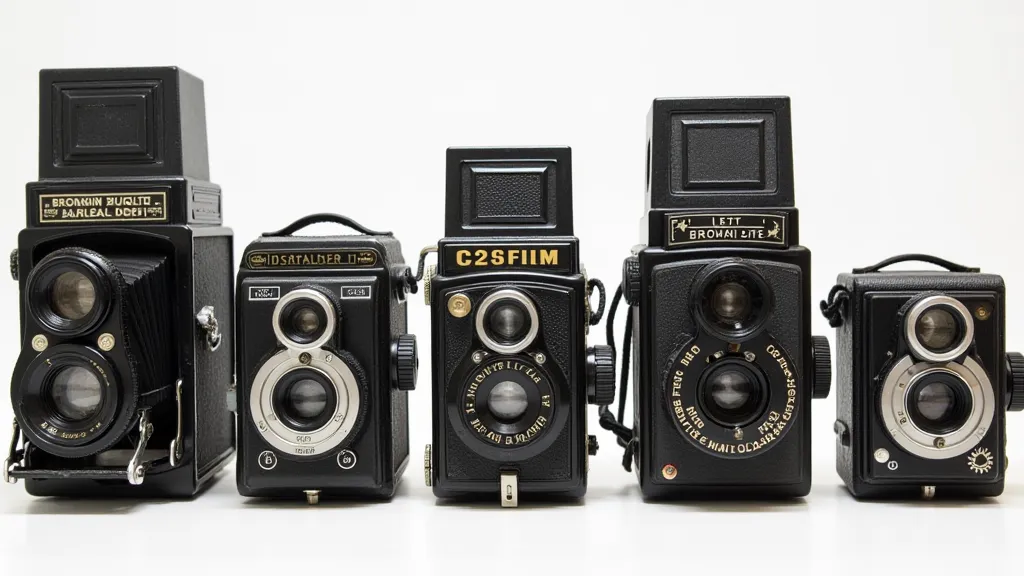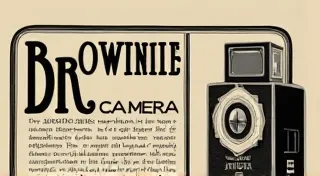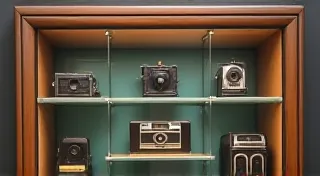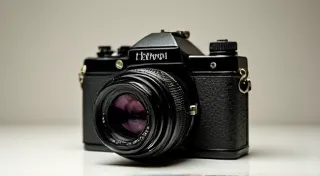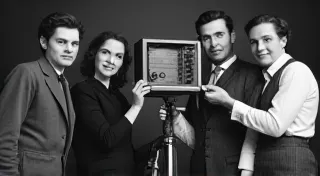Comparing Different Brownie Camera Film Formats
The Brownie camera, a cornerstone of accessible photography, has a surprisingly varied history when it comes to film formats. Understanding these differences is crucial for collectors, enthusiasts, and anyone looking to appreciate the nuances of these vintage cameras and their resulting images. This article explores the evolution of film formats used in Brownie cameras and how those choices impacted the resulting photograph's quality and aesthetic.
The Early Days: 620 Film – The Brownie Standard
The earliest Brownie cameras, including the original 1900 model, largely utilized 120 film. However, as production scaled, Kodak introduced the 620 film format. 620 film was essentially 120 film with a cardboard backing that allowed it to fit into smaller camera bodies. This was a key factor in the Brownie’s affordability and mass appeal. For decades, the 620 became *the* standard for most Brownie models. The negative size produced by 620 film is relatively small (around 2.25 x 5.5 inches), which, while perfectly adequate for snapshots, limits enlargement possibilities compared to larger formats. The allure of the Brownie lay not in its technical prowess, but in its ability to put a camera in the hands of virtually anyone, allowing them to capture memories in a previously inaccessible way. Its simplicity, both in design and operation, meant a novice could pick it up and start taking pictures almost instantly – a powerful democratizing force in photography.
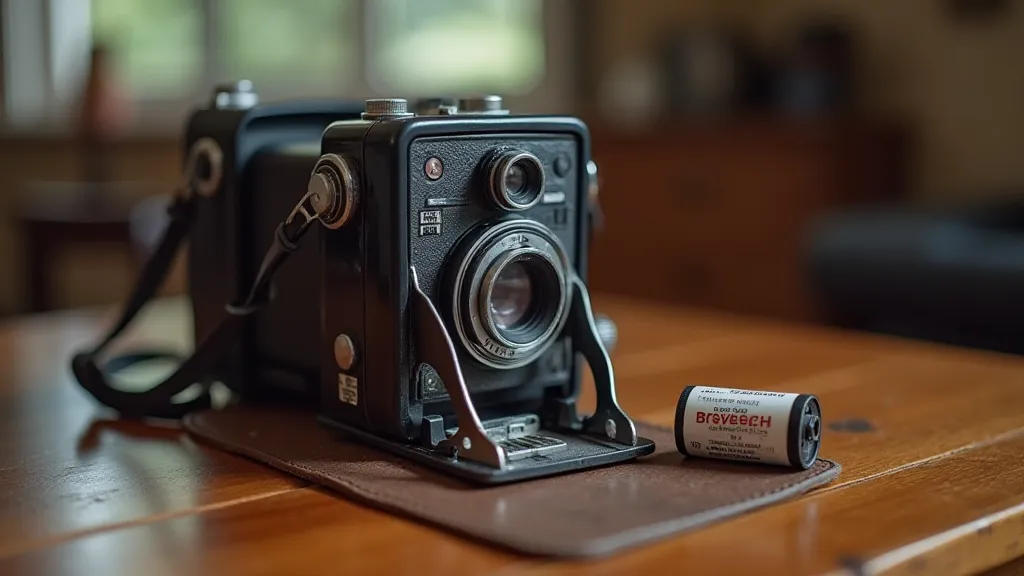
The Introduction of 120 Film in Some Models
While 620 was dominant, some later Brownie models, particularly some of the more advanced versions, were designed to use 120 film. Using 120 in a Brownie camera allowed for twice the number of exposures per roll, increasing shooting opportunities. The larger negative size of 120 (approximately 2.5 x 6.0 inches) also allowed for slightly greater enlargement potential and marginally improved image quality, primarily due to the larger grain structure. However, running 120 in a 620 camera requires a special adapter. The design choices behind these different models reflect Kodak's strategic approach to offering various levels of photographic experience. While the early Brownies were meant for simple snapshots, later models catered to those seeking a slightly more refined photographic experience, often at a higher price point.
The 127 Format: A Smaller, Less Common Option
Less frequently encountered, the 127 format (also known as "sub-120") saw use in a few Brownie models, typically the smaller and more budget-oriented versions. 127 film is significantly smaller than 120 or 620, resulting in a smaller negative size (roughly 2.25 x 4.5 inches). Its use reflected Kodak’s continued efforts to offer lower-priced photographic options. Image quality with 127 is noticeably lower than with 620 or 120, primarily due to the smaller negative size and finer grain. Finding 127 film today can be challenging. These compact Brownies appealed to a market that wanted a cheap and easy-to-carry camera, even if it meant sacrificing image quality. The design ethos was clearly about accessibility and affordability above all else.
The Impact on Image Quality: Grain, Sharpness, and Enlargement
The choice of film format directly influenced the photographic outcome. The smaller negative sizes of 620 and 127 films meant that prints would exhibit more visible grain when enlarged compared to images taken with 120 film. Sharpness is also inherently tied to the film format – larger negatives generally allow for finer detail to be captured and reproduced. While the Brownies were never intended for high-resolution photography, the difference between a 620 and a 120 image, even when enlarged to modest sizes, is noticeable. The 'perfect imperfection' of these vintage prints – the visible grain and slightly muted colors – is often part of their charm, contributing to a nostalgic and evocative feel. For those fascinated by the narratives imbued in these images, further exploration of how the Brownie camera and others became entangled in narratives of loss and memory can be found in The Cartographer's Imperfection: Brownie Cameras and the Narrative of Loss.
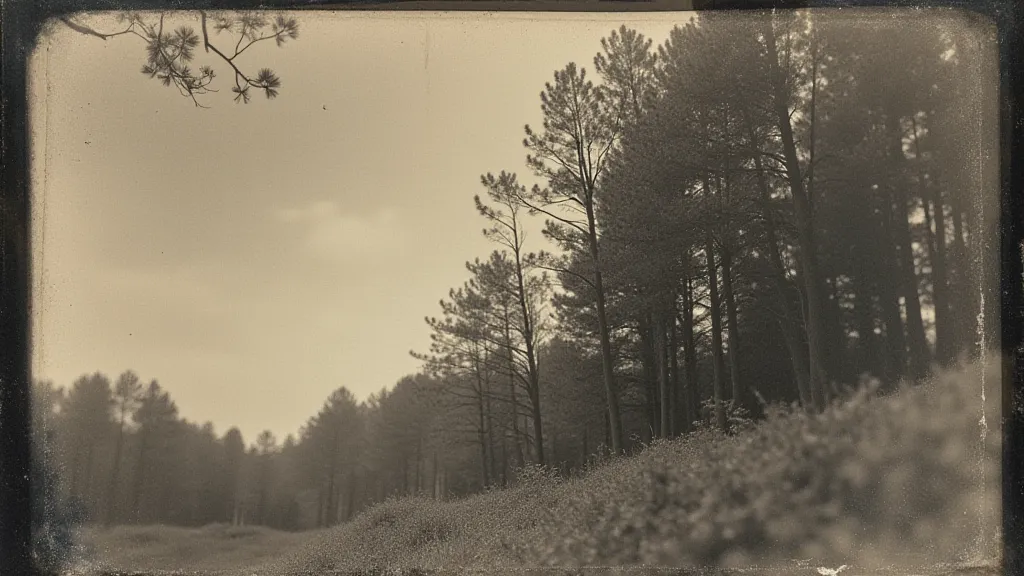
Film Availability and Collecting Considerations
Today, finding readily available 620 film is difficult. While some companies re-spool 120 film into 620 cartridges, it’s a limited and often costly option. 120 film remains more readily available, and occasionally, 127 film can be found, though it is a rarer find. Collectors should be aware of these availability challenges when considering owning and using specific Brownie models. Restoring a vintage Brownie can be a rewarding experience, bringing these classic cameras back to life, but it's important to understand the nuances of different models. Interested collectors may find Restoring a Brownie Camera: A Step-by-Step Guide a valuable resource. The market for vintage cameras and accessories has seen a resurgence in recent years, driven by a renewed appreciation for analog photography and a desire to connect with a simpler time. However, this also means that prices for certain models and film formats can be quite high.
Beyond the Basics: Variations and Rare Finds
While the 620, 120, and 127 formats defined the Brownie experience for most users, Kodak's experimentation led to other, less common variations. These rare models often incorporated unique features or were produced in limited quantities, making them highly sought-after by collectors. Understanding the full spectrum of Brownie camera models requires more than just knowing the film format; it involves delving into the design quirks, production numbers, and historical context of each variant. For those eager to learn more about these unusual Brownie creations, a deep dive into Rare and Unusual Brownie Camera Models is highly recommended.
The Brownie's Enduring Legacy
The Brownie camera's impact on photography extends far beyond its technical specifications. It democratized photography, bringing it within reach of the masses. The simple act of pointing and shooting, once a privilege of professionals, became accessible to everyone. The Brownie fostered a culture of casual photography, encouraging people to document their lives and share their experiences. While the digital age has largely supplanted film photography, the Brownie remains a beloved icon, a tangible link to a simpler time. Its legacy continues to inspire photographers and collectors alike, a testament to the power of accessible technology and the enduring appeal of analog aesthetics. The camera’s success also paved the way for future Kodak innovations, shaping the landscape of consumer photography for decades to come.
